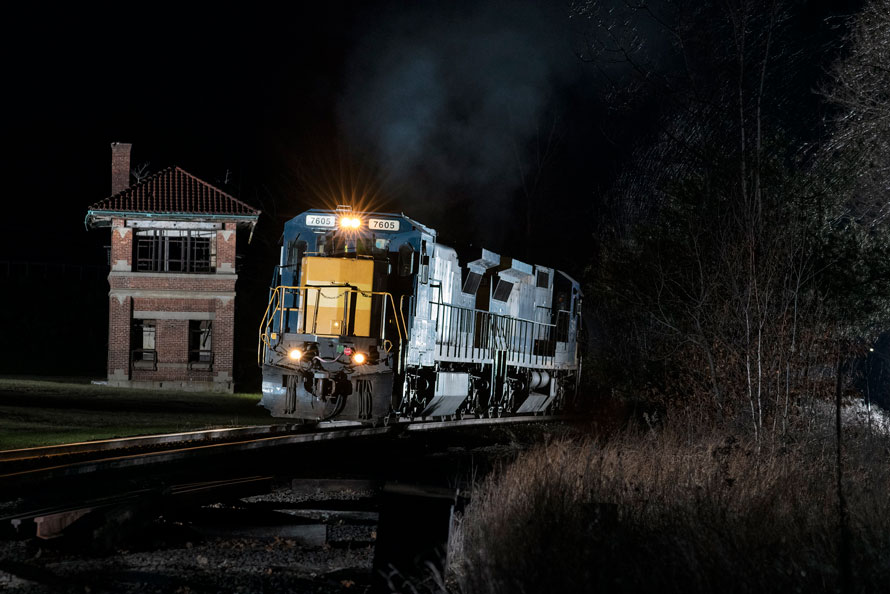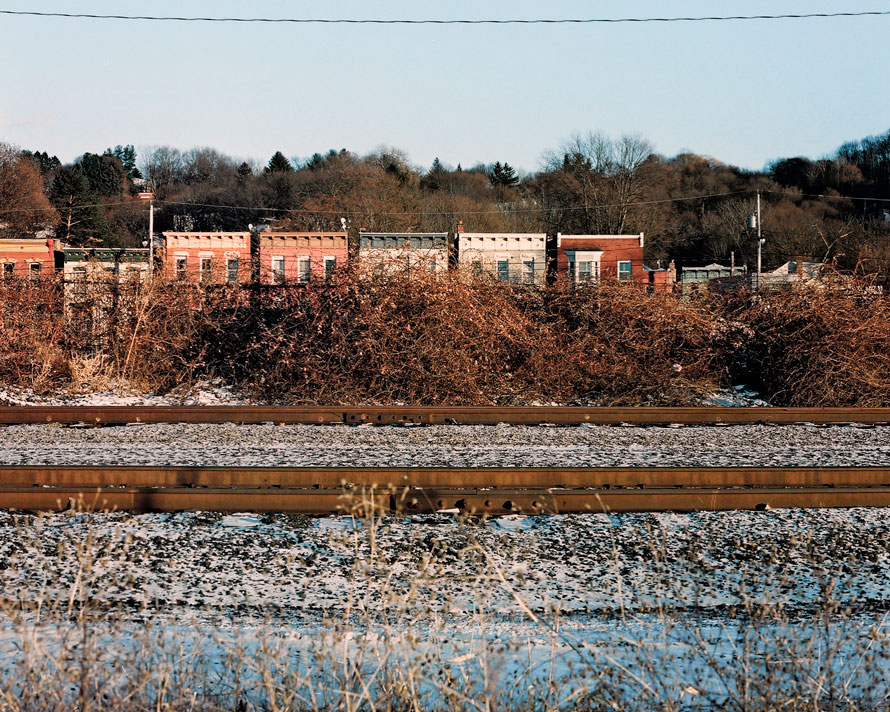
I grew up looking at well lit, telephoto images of trains plying the scenery in magazines discarded from the library. I wanted get to there, for my photos to end up well-circulated and glossy. Instead, I ended up walking along the tracks, making images that looked nothing like what I saw in print. Most of the time, I wouldn’t see any trains and would shoot a few details along the way. When a train would appear, the only way to get a shot was to sprint off the right-of-way, head up a bank, and hope for a clear shot with a 50mm which had the ability of capturing too wide and not nearly enough all at the same time.
After a break from the railroad space, I came back to shoot trains at night. I’d given up on chance and was carefully planning each shot. A lot had changed. Digital cameras allowed rapid iteration: test and improve without ever returning to the dark room. I got a scanner. I learned about railroad operations in message groups. Sometimes I’d ask a question and get back an answer from that night’s crew! Google maps changed everything—it was easy to pick out good locations without even leaving home.

My dog and I pushed through the thick brush on an abandoned D&H branch
At some point, the night images I was making felt divorced from the spaces I was trying to share. I assigned myself the homework of returning to explore the railroad environment. A few blocks from home, I found a 1929 date nail on a siding that ran through what was now a school yard. My dog and I pushed through the thick brush on an abandoned D&H branch that I used to walk and admire the each letter of D E L A W A R E & H U D S O N on its own panel. Burrs got stuck to my cloths. Cinders filled up my socks as I climbed embankments. I drifted through neighborhoods looking down into backyards, in plain view but out of sight of anyone who might care.

Digital cameras have allowed great progress in night photography. You can check your work and move lights until the scene is perfect all while shooting low-noise images at high ISO in a way film could never match. None of those advantages matter much when I’m out exploring and I often reach for a film camera. Adoption of digital has made used cameras very inexpensive. I often lug a medium format Mamiya RZ67 with me. Only ten shots fit on a roll of 120 film, so I’m forced to spend more time looking for shots than taking them.

Higher resolution camera and better lenses are allowing me to back up to show more area and and to show greater detail at the same time. As I walk, I’m building up a list of those must-include details in the night photographs. I’m looking forward to some some longer, multi-day hikes out along forgotten right-of-ways and hope I can soak up even more of the railroad environment.

William Gill – Photographs and text Copyright 2019
William Gill lives in Troy, New York, a few blocks from a small yard. His portfolio can be viewed at: https://trainsatnight.com
William, your night shots remind me of O. Winston Link’s photographs taken during the last years of steam operation on the N&W. The NH steam engine is especially stunning. Link’s night photos required miles of cable, one shot flashbulbs, and many hours of preparation – for one shot, no redo’s possible. I’m sure you’re using the electronic flash units that fire when they detect another flash, with fantastic images resulting. Today’s technology was undreamed of when most of us started taking photographs, and while some continue to embrace film, processing, and darkrooms, I for one have found digital to be better, more fun, with immediate gratification, and cheaper! And, today’s photo printers used with digital images are truly amazing. (At Edd’s suggestion, I recently bought a Canon Pro-100 and am awestruck by each and every print.) Your photos define the concept of “Trackside Photographer”. Thanks and well done!
They did such a nice job on NH 3025 – I don’t think I’ll ever get tired of shooting it. I agree, new camera technology is really amazing, the dynamic range on a modern digital camera is amazing…I’ve shot a few night images on film and they take an incredible amount of light. While I don’t have to walk around changing bulbs, I still only get one shot at each train, by the time the strobes recycle, the composition is long gone!
Thanks so much!! A unique way to look at railroads!! Very nice!! Thanks again!!
Very nice story and the Johnsonville tower shot is fantastic!! Great job Will!! Rich H.
Great photos! The one of the workers homes looks like a whole set of DPM models! (just finished assembling 7 of them). Enjoyed your post.
William, that’s a lovely night shot, and this is a thoughtful article. Many thanks for sharing. I’ve found night photography has been one of the things that keeps me motivated in what is otherwise an increasingly dull local rail scene.